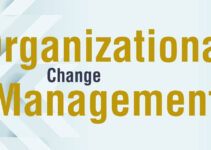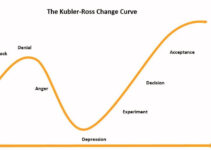We all are aware of the significance of the change in the workplace, business operations, and functionality of organizations. Businesses need to embed the latest change methodologies to establish resilience in the organization and keep their employees and team members on the same page. Today, we’ll discuss the top 12 examples of implementing change in the workplace.
Examples of Implementing Change in the Workplace – Top 12
Some of the top 12 examples of implementing change in the workplace are as follows;
McDonald’s
McDonald’s is the world’s leading fast-food chain brand and the company employs various tech innovations to offer its customers a better experience. The company introduced a new change plan by the name of “Velocity Growth” in 2017; some of the innovative changes it has brought in the company’s processes are as follows;
- Employing voice technology to receive orders at the drive-thru points
- Providing better drive-thru experience at a specific time of the day, weather, and traffic conditions; various menu that customers are ordering
- Hiring engineers and data scientists to backup the tech change initiative
When the company implemented the change plan in 2020, it amplified the company’s sales by 23%. The company kept on increasing the digital changes and engaging with customers digitally. The focus of the chain brand was to increase the digital presence, delivery, and drive-thru option.
Domino’s Pizza
Domino’s Pizza was facing the problem of a brand reputation back in 2008. The pizza chain brand turned things around by implementing changes successfully within the organization. Back then, the management realized the growing trend of online orders. The company focused on the online order processing system and offered customers a better experience; it helped the company to differentiate itself from other competitive brands in the industry.
The change of digital transformation brought a wave of excitement throughout the organization from top-to-bottom. In fact, the pizza chain brand hired a new tech team to support digital changes. The company offered various options to customers to place orders like smart Tv, Facebook, Twitter, Google Home, Alexa, and text messages.
Lego
Lego had a great profitable history ranging from 1932 to 1989. But in 2008 the company was a year-over-year debt of 800 million dollars because the company hadn’t added anything new to its product portfolio. In 2004, the company rebuilt its strategy from ground zero; Lego focused on its core product and decrease the total number of bricks from 12900 to only 7000.
Lego started expanding its business operations and marketplaces by launching movies, physical action figures, and video games. The company turned back from the edge of bankruptcy and started making a profit.
General Electric
The market value of GE in 1981 was 12 billion dollars when Jack Welch inherited the company and became its CEO. The net worth of the company in 1998 was 280 billion dollars when he left it. He achieved significant growth in the company by completely renovating the company’s strategy from the start.
The company employed the Six Sigma technique of decreasing the defects in the production processes and in the products. The process of testing, retesting, and repeating continuously helped the company to save roundabout 10 billion dollars.
Booking.Com
Booking is a UK-based company and the company and its team members were employing MS Office 365 for the company’s business operations. The company along with its team has successfully transferred from Office 365 to Google Workplace. It allowed the company a unified method of cooperating across the organization.
- Analyzing and applying planning workshops to have expectations for the project and its roles
- Early adopters would promote the new program among other employees
- Conducting surveys to measure the readiness of the employees
- Launching training programs for the employees on how to use Google Workplace
Microsoft
Microsoft set an objective of making the sales tracking and operational analysis system easier among different regions in 2020. The older system wasn’t automated and it caused a lot of issues for the company’s management like compliance issues, duplication, and data misalignment. However, the focus of the leadership is to develop a new system that would meet everyone’s needs; but its employees are reluctant to the idea of change and won’t accept the new business processes.
- Recognizing and documenting the main blockers of change
- Asking people to report and become the change leader
- Having weekly and bi-weekly meetings to discuss the needs of the project
- Implementing action plans in various areas like the company’s readiness, adoption, and delivering
- Having a proper channel of feedback in order to know their views
The University of Virginia
The university is the first educational institution that implemented the change and dealt with its challenges at the higher education level. The management realized the challenges and issues after implementing the change in the university because they weren’t achieving positive results.
- Adding some people to the change management team
- Developing the change capabilities in the portfolio work
- Promoting project managers to become the change leaders in the specific project
Sura
Sura is a financial service-providing company and the company was planning to achieve digitalization for the implementation of new projects, developing product sales strategy, taking the initiative of innovation and creativity, and pension departments. However, Sura implemented the following changes;
- Analyzing various projects and assigning them to change manager, project manager, and sponsor
- Combining project and change management
- Launching training programs
- Moved from the traditional selling approach of selling one product to multiple products
- Transferring employees from a fixed office to a flexible working space
- Needing more people to transition from paperwork to digitalization
Zurich Life
Zurich is a multinational insurance company and it follows a slow bureaucratic system. The company had issues implementing the change because of the changing interests of customers and market conditions. There was a shift in the overall insurance industry and the management realized the change in competition, regulations, and public policy. Some of the steps they took for the transition phase are as follows;
- Introducing software where the insurance agents could see the investments of their clients
- Hiring change leaders to increase the employee engagement
- Limiting bureaucracy
- Giving independence to people to make decisions
- Cutting the size and frequency of the meeting
- Asking executives to become available to the employees
- Forcing people to know what processes were essential
HMRC
HMRC is a government organization that has made many people frustrated and angry during the recession phase. The company transfers customers’ requests from one department to another because the change team follows rigid workflows and scripts. However, the company focuses on decreasing the customer journey. The company achieved the change goals and objectives in the following way;
- Brainstorming various ideas to manage calls effectively
- Developing metrics to analyze calls and the quality of calls
- Implementing a change management plan on a small scale and then launching it on a wider scale
- Updating the telephonic system, adopting the latest technology, and revising the old processes
Sykes
Sykes is a digital marketing and customer service providing company, and the firm faced the challenge of keeping up with the pace of speedy technological trends. The low level of the company’s awareness about the change program would make it difficult for the team to accept the change. In order to launch the change management program, the company needs funding. Sykes implemented the change program in the following stages;
- Developing an annual roadmap and plan for implementing the change
- Launching a training program of change management for change managers and leaders
- Applying change management protocols to the entire company’s processes
Sophos
Sophos is a cybersecurity company and the firm faced the challenge of implementing the change program due to the frequent updates. The company employed the sales team to streamline its various operational processes, but they dealt with the issue of regular updates of various products. However, Sophos took the following steps to implement the change;
- Setup guidelines for the change team to follow it
- Developing a new interface and the sales button
- Embedding videos and other media to bring management and the sales team on the same page about the product communication
Conclusion: Examples of Implementing Change in the Workplace
After an in-depth study of the top 12 examples of implementing change in the workplace; we have realized that implementing change is significant in the workplace. If you’re studying case studies of change implementations in the workplace, then you should keep in mind the abovementioned examples.
Ahsan is an accomplished researcher and has a deep insight in worldly life affairs. He goes Live 3 days a week on various social media platforms. Other than research writing, he’s a very interesting person.


